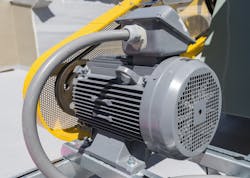At a large battery separator plant, the number of motor trouble calls seemed high. While discussing this with the plant electrical engineer, a senior electrician said he often found high resistance across motor lead connections.
After disassembling the problem connections, he performed insulation resistance tests on the windings. Next, he used solderless connectors for safe temporary connections so he could observe the running motor and take vibration readings. If no problems emerged, he then made the permanent connections.
The written procedure for motor maintenance (including replacement) required all three-phase motor connections to be bolted. On smaller motors, connections were sometimes made by other means. Larger motors had the required lugs, but per this electrician, compression lugs sometimes “had no die marks and were just squished with pliers.”
This discussion led to that electrician’s conducting a one-on-one “show me” session with each of the plant’s 14 other electricians. This exercise revealed that two electricians involved in motor work did not know how to test connection resistance or how to select the proper crimping die for a given connection. Training to qualify those workers would have prevented many improper repairs.
About the Author

Mark Lamendola
Mark is an expert in maintenance management, having racked up an impressive track record during his time working in the field. He also has extensive knowledge of, and practical expertise with, the National Electrical Code (NEC). Through his consulting business, he provides articles and training materials on electrical topics, specializing in making difficult subjects easy to understand and focusing on the practical aspects of electrical work.
Prior to starting his own business, Mark served as the Technical Editor on EC&M for six years, worked three years in nuclear maintenance, six years as a contract project engineer/project manager, three years as a systems engineer, and three years in plant maintenance management.
Mark earned an AAS degree from Rock Valley College, a BSEET from Columbia Pacific University, and an MBA from Lake Erie College. He’s also completed several related certifications over the years and even was formerly licensed as a Master Electrician. He is a Senior Member of the IEEE and past Chairman of the Kansas City Chapters of both the IEEE and the IEEE Computer Society. Mark also served as the program director for, a board member of, and webmaster of, the Midwest Chapter of the 7x24 Exchange. He has also held memberships with the following organizations: NETA, NFPA, International Association of Webmasters, and Institute of Certified Professional Managers.
